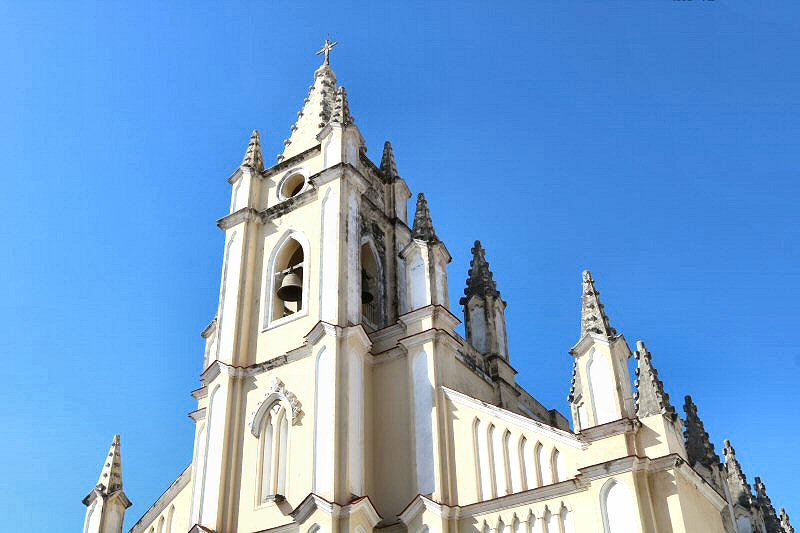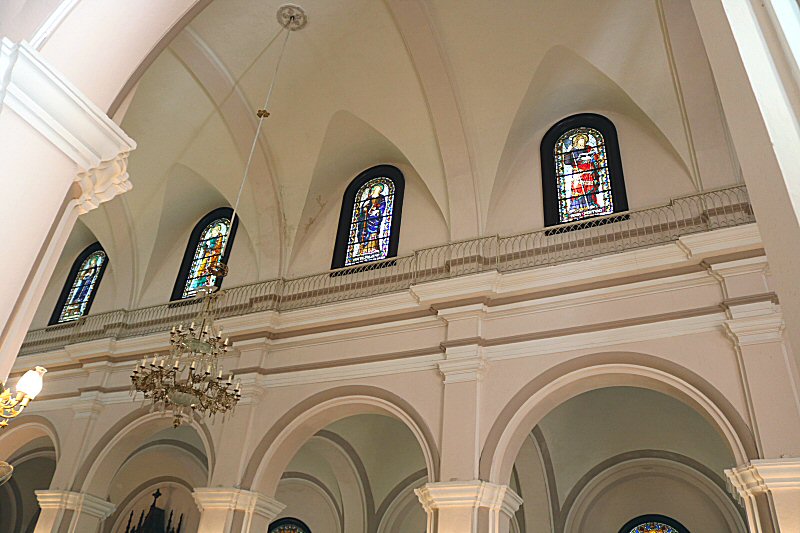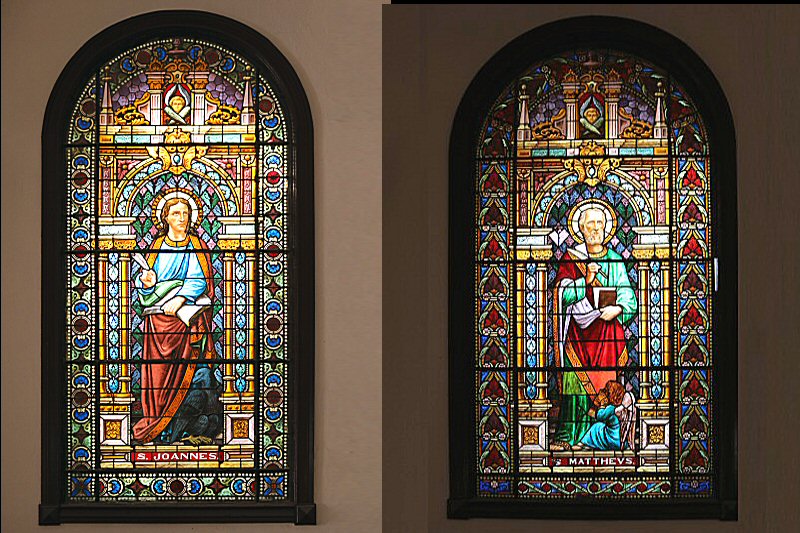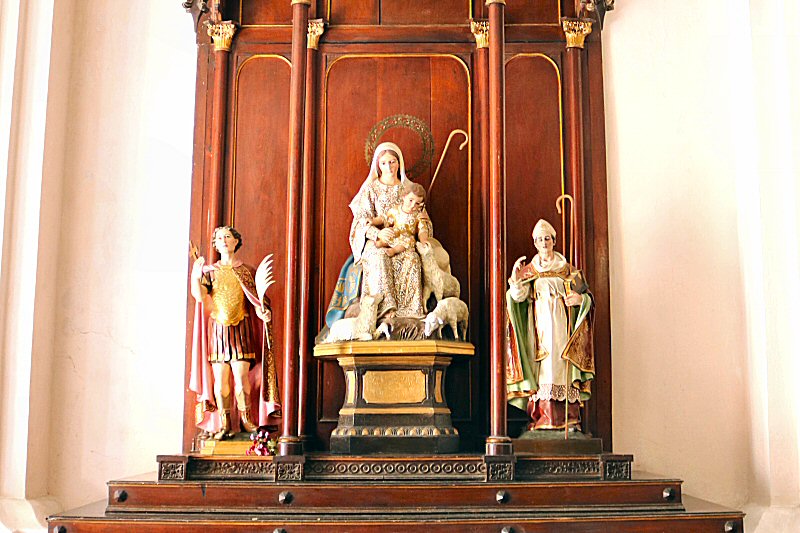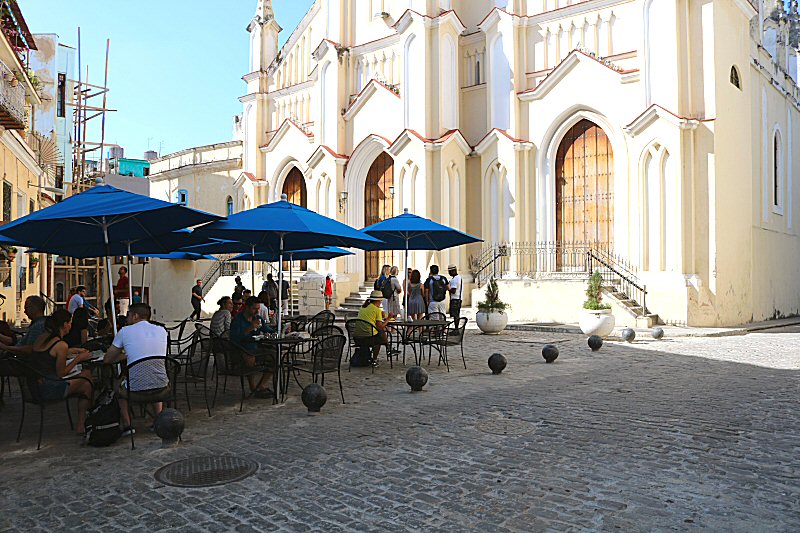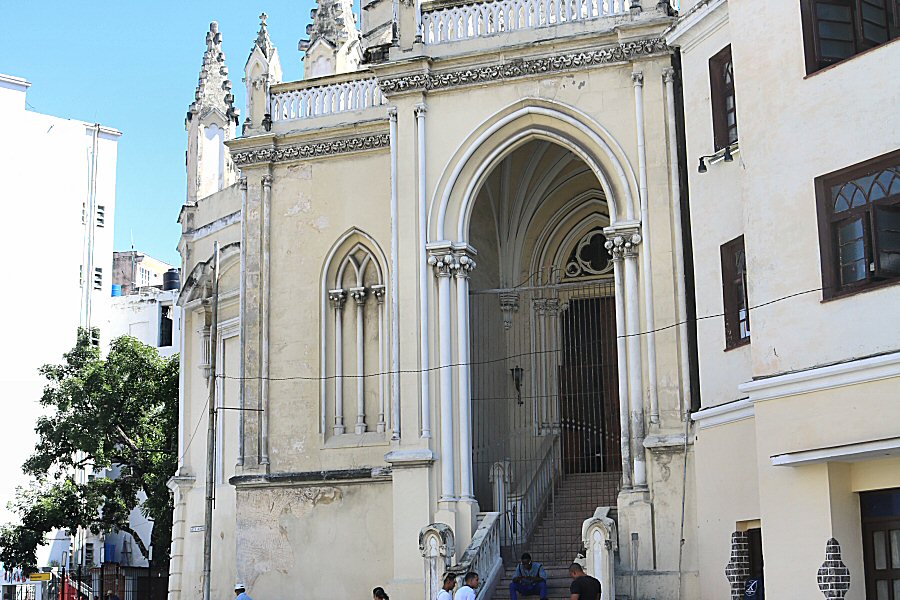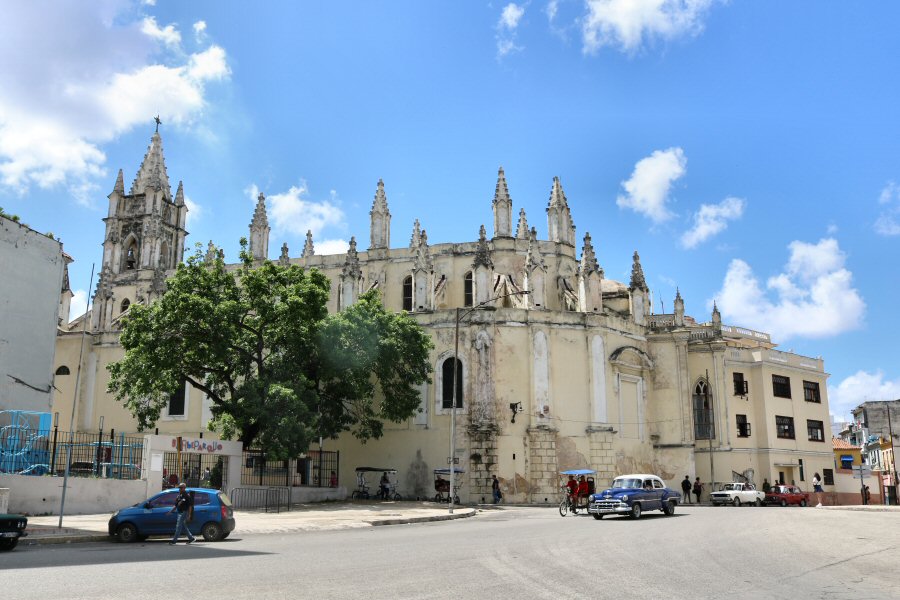
The Iglesia del Santo Ángel Custodio is
located on the Compestela street #2, where it intersects with
the Cuarteles street.
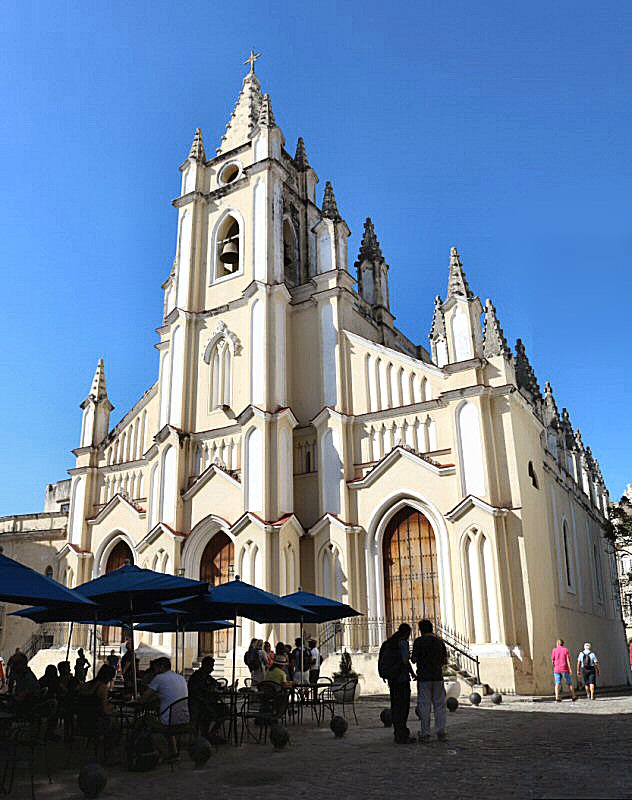
The area where the Iglesia del Santo Ángel
Custodio stands today, previously was known as the hill Peña
Pobre (Cliff of the Poor), and later it received the name
Loma del Ángel (Hill of the Angel). It is rumoured that some
black horros (slaves that were freed) were doing their
rituals in some huts in this area. However, such kind of
celebration was forbidden by the governor. Therefore, the
governor ordered to demolish all the huts there, except one
that Bishop Compestela dedicated to daily mass. Initially, a
single nave was built in the place of that hut. Later, the
chapels of the transept were added to the nave during the
construction process of the church that was completed in 5
years and was inaugurated in 1695. It was consecrated to
Santo Ángel Custodio. Its construction was undertaken by
Bishop Diego Evelino de Compestela who worked personally in
the building process., and it served as the auxiliary
building of the parish church Parroquial Mayor in 1693. The
hermitage was elevated to the rank of the church in 1703.
In the first half of the 18th century its interior was expanded by adding two side naves with a vault roof to the building. In the first decades of the 19th century the staircase at the entrance was built. It is known that the famous French painter Juan Bautista Vermay that made some oil paintings also for El Templete and Cathedral of Havana, made some oil paintings for the church, and it is thought that these paintings were removed with the paintings that were on the altar.
The building was damaged severely by the hurricane in 1844. It was restored by the Bishop Fray Jacinto María Martínez in neo-Gothic style, rather different than the original. It is presumed that the architect was inspired by the work of Eugène Emmanuel Viollet-le-Duc, the French architect that restored many prominent medieval landmarks in France, including those which had been damaged or abandoned during the French Revolution.
However, the new building was seriously
damaged by another hurricane two years later in 1846, and
the following year it was totally rebuilt by the same
bishop, preserving its beautiful neo-Gothic style (Gothic
Revival style) that we see today. Even though, it was put to
the service of the cult, subsequent repairs continued for a
while from 1866 to 1871. In 1880 the façade was restored,
the ground was paved by black and white marbles, and the oil
paintings of the altar were placed.
In 1899 the church was handed over to the
American Augustinians that added an extensive building to
the church after it was throughly restored. The new building
that was constructed at the back of the church, was used as
the residence of the friars, but more importantly, it housed
a parochial school, the Escuela San Agustín that was
responsible for the primary and secondary education.
The friars of the Escuela San Agustín established the
University of Villanueva. The Escuela San Agustín was
nationalized in 1961.
In 1925 the door on the Avenida del Belgíca
was opened. After a period of neglect the church was restored in
1983.
The Iglesia del Santo Ángel Custodio is
one of the most grandiose examples of neo-Gothic style that
remains today. It is easy discernible for its many Gothic
pinnacles that adorn the roof and the upper part of the
cornice. It is painted in light caramel color and the most
striking feature from outside is its bell tower, topped with
a cross. All the entrance doors are in ogival shape.
The main entrance is on the Compostela
street, but there is also a large wooden door, opening onto
Avenida del Bélgíca that will bring you into the church
behind the main altar, where the carved wooden Guardian
Angel stands. Inside there are three naves, covered with
barrel vaults. The apse has a polygonal shape. It is the
only church in Cuba that has an ambulatory. The atrium had
served as cemetery in the 18th century. The stained glasses
are outstanding.
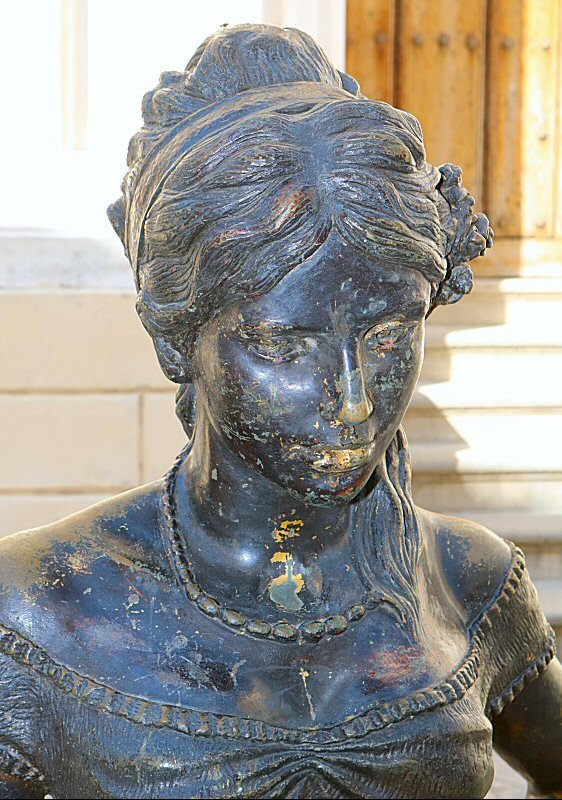 There is a pleasant square, the Plazuela
del Santo Ángel, in front of the church, where one can take
a breath in the cafes around (for example,
Café & Boutique
Jacqueline Fumero). It is one of the most intimate
and charming places in Old Havana.
There is a pleasant square, the Plazuela
del Santo Ángel, in front of the church, where one can take
a breath in the cafes around (for example,
Café & Boutique
Jacqueline Fumero). It is one of the most intimate
and charming places in Old Havana.
In the center of the
square stands the statue of a woman; it is Cecilia Valdés,
the fictional heroine of the romantic novel “Cecilia Valdés
o la Loma del Angel”, written by the Cuban writer Cirilo
Villaverde in 1839. The anti-slavery novel is based on the
struggle of the free mulattos of Havana with the rich whites
of the racist society. It shows the transformation of the
life in Havana and its dynamics, parallel with the
modernization of the sugar industry. The church was the
setting for this novel that is the most important novel of
the Latin American 19th-century literature. The main scene
of the novel, the bloody marriage scene, took place on the
steps of the Iglesia del Santo Ángel Custodio. A plaque on
the wall close to the door decsribes the Cuban life in the
19th century.
Among the notable personalities that
passed through the doors of the Iglesia del Santo Ángel
Custodio are the priest and the educator Félix Varela y
Morales and José Martí that were baptized here, in this
church, in 1788 and 1853 respectively. José was baptized by
the presbyter Tomás
Sala y Figuerola. This alone gives the church an
enormous historical value.
